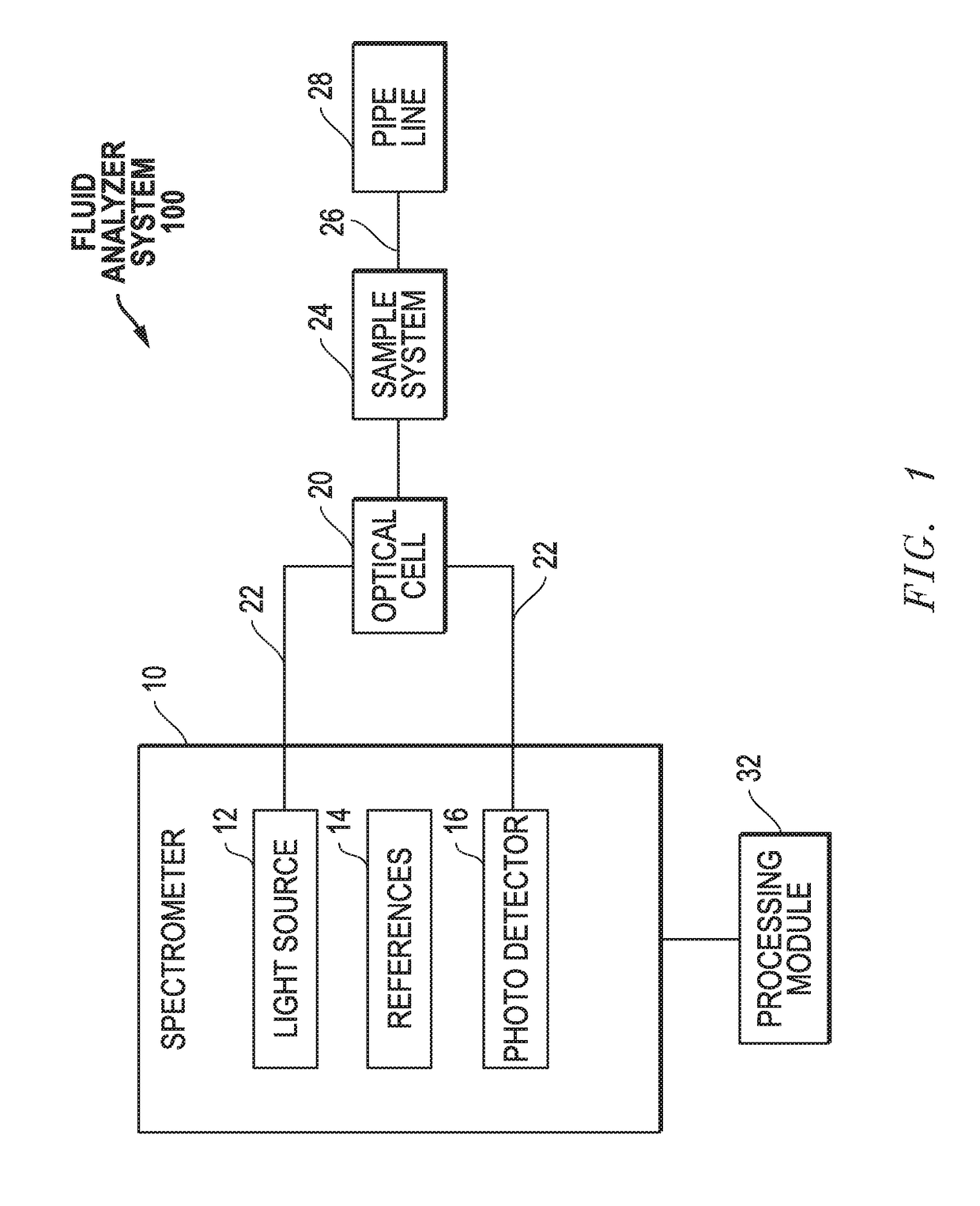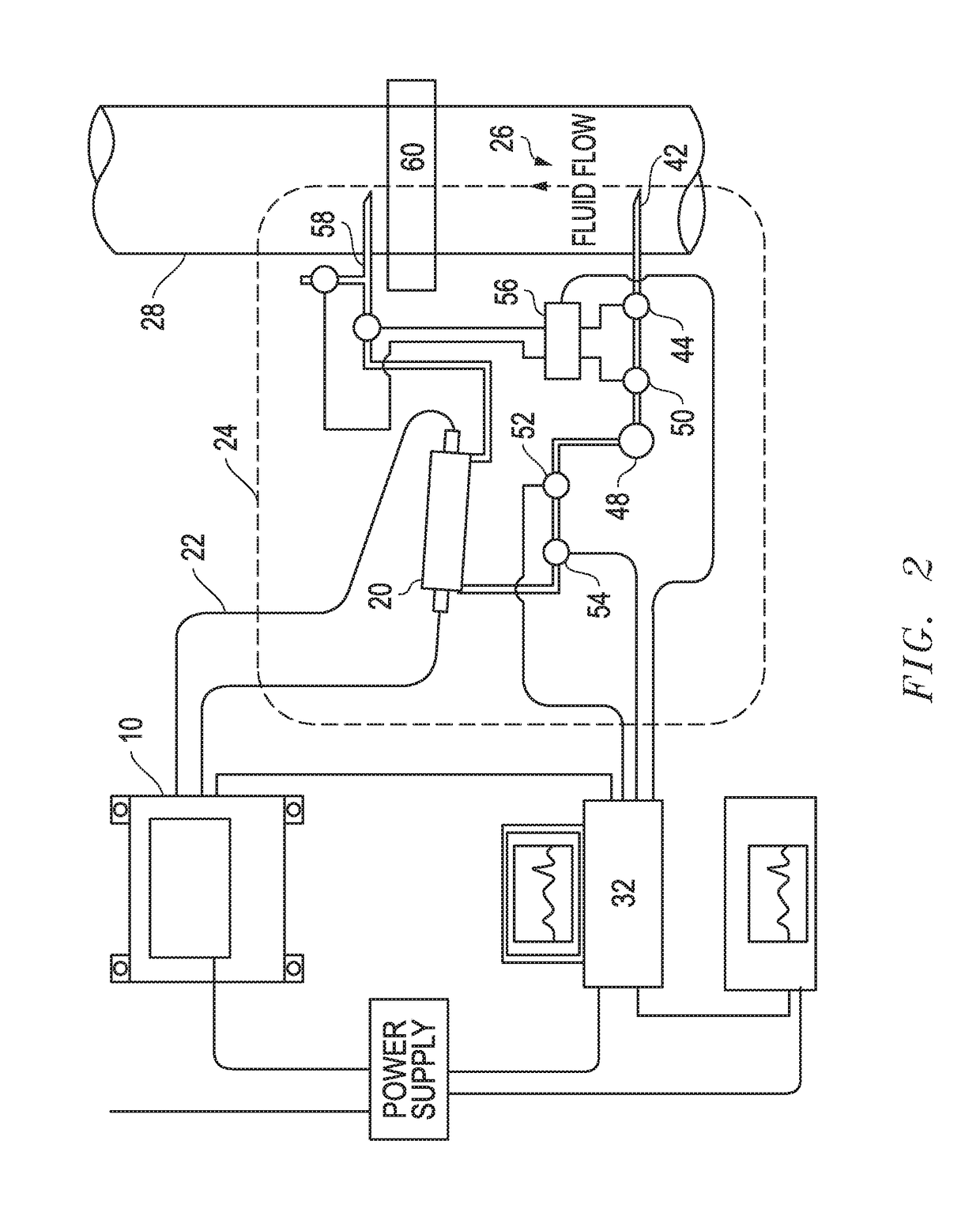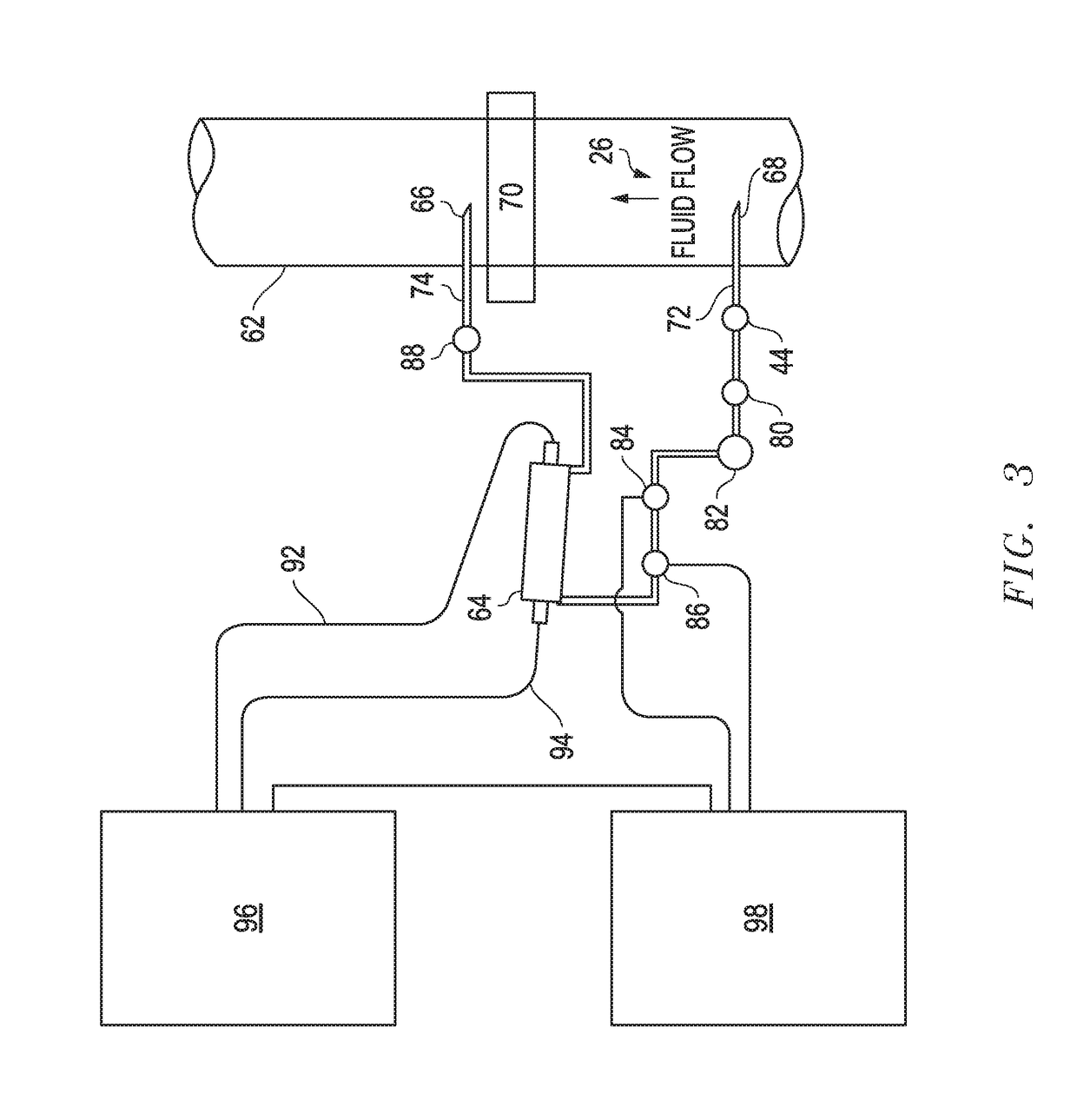System and method for determining vapor pressure of produced hydrocarbon streams via spectroscopy
a technology of vapor pressure and hydrocarbon streams, which is applied in the field of system and method for determining vapor pressure of produced hydrocarbon streams via spectroscopy, can solve the problems of loss of revenues and potential emission issues, affecting the measurement of the rvp of stabilized condensate, and affecting the quality of hydrocarbons, so as to achieve the effect of reducing interferen
- Summary
- Abstract
- Description
- Claims
- Application Information
AI Technical Summary
Benefits of technology
Problems solved by technology
Method used
Image
Examples
Embodiment Construction
[0033]The present invention is directed to improved methods and systems for, among other things, determining vapor pressure of produced hydrocarbon streams via spectroscopy. The configuration and use of the presently preferred embodiments are discussed in detail below. It should be appreciated, however, that the present invention provides many applicable inventive concepts that can be embodied in a wide variety of contexts other than as described herein. Accordingly, the specific embodiments discussed are merely illustrative of specific ways to make and use the invention, and do not limit the scope of the invention. In addition, the following terms shall have the associated meaning when used herein:
[0034]“fluid infrastructure” means any infrastructure used in connection with the collection, processing, storage, transmission or distribution of a fluid including, without limitation, if the fluid is a hydrocarbon, any infrastructure between the wellhead and the point of retail delivery...
PUM
| Property | Measurement | Unit |
|---|---|---|
| wavelength range | aaaaa | aaaaa |
| Reid vapor pressure | aaaaa | aaaaa |
| temperature | aaaaa | aaaaa |
Abstract
Description
Claims
Application Information
 Login to View More
Login to View More - R&D
- Intellectual Property
- Life Sciences
- Materials
- Tech Scout
- Unparalleled Data Quality
- Higher Quality Content
- 60% Fewer Hallucinations
Browse by: Latest US Patents, China's latest patents, Technical Efficacy Thesaurus, Application Domain, Technology Topic, Popular Technical Reports.
© 2025 PatSnap. All rights reserved.Legal|Privacy policy|Modern Slavery Act Transparency Statement|Sitemap|About US| Contact US: help@patsnap.com



